In 1965, conceptual artist Joseph Kosuth created One and Three Chairs, a piece that consisted of one wooden folding chair, a mounted photograph of a chair, and a mounted photographic enlargement of the dictionary definition of “chair.” The question (aside from the inevitable “is this art?”) is, which representation of the chair is most accurate?
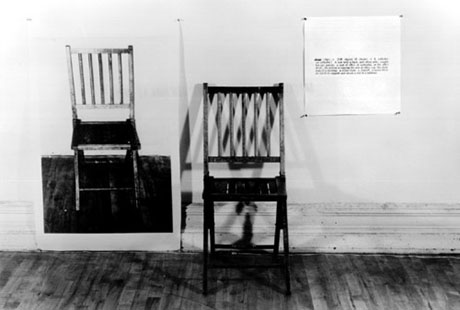
IMAGE: Joseph Kosuth / Artists Rights Society (ARS), New York, courtesy of the artist and Sean Kelly Gallery, New York. In the collection of The Museum of Modern Art, New York.
Inspired by Kosuth’s work, and in homage to the anonymous and unsung designers of pasta shapes, artist Serkan Ozkaya partnered with architect George L. Legendre to create One and Three Pasta, an installation of 92 pasta shapes, their mathematical formulae, and their 3D printed representations currently on display at Postmasters gallery in Tribeca.
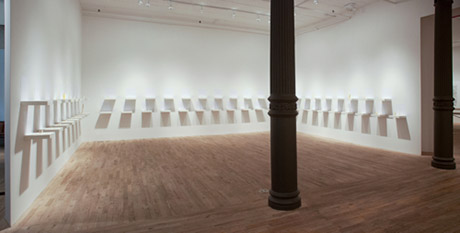
IMAGE: Serkan Özkaya and George L. Legendre, One and Three Pasta, 2012/14. Photograph courtesy of Postmasters Gallery, New York.
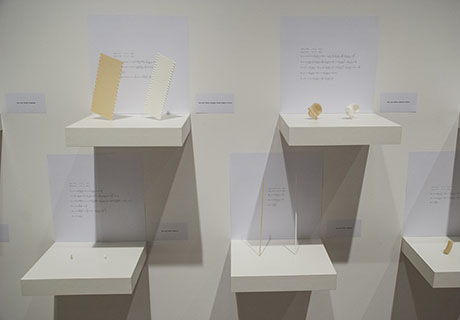
IMAGE: Installation detail, Serkan Özkaya and George L. Legendre, One and Three Pasta, 2012/14. Photograph courtesy of Postmasters Gallery, New York.
Each shelf in the gallery features a single unit of pasta — a spindly vertical strand of cappellini, or the familiar bow-tie of farfalle — accompanied by a wall-mounted text showing its form represented as a series of equations and their 3D-printed solution.
The formulae are the work of Legendre, who published them in Pasta by Design in 2012. Orkan’s idea was to feed the CAD models generated by those equations into a 3D printer, and then display all three, side-by-side.
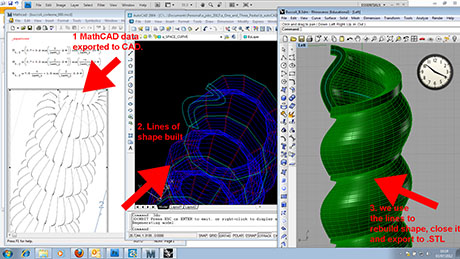
IMAGE: Screen in progress, Serkan Özkaya and George L. Legendre, One and Three Pasta, 2012/14. Photograph courtesy of Postmasters Gallery, New York.
Sadly, given my mathematical illiteracy, the equations mean nothing to me. But the invitation to compare the “real,” organic, flawed example of each pasta shape with its abstracted, ideal white plastic expression is irresistible. Sometimes, as in the lumaconi rigati, the 3D-printed incarnation is too clinical, its curves lacking the lazy, inviting irregularities of its wheat-based double.
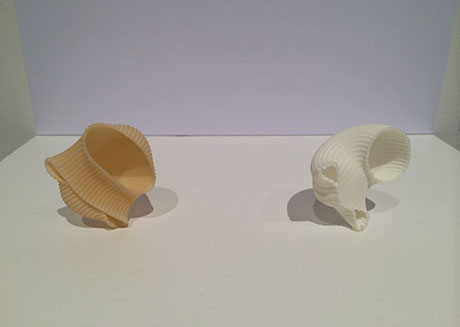
IMAGE: Lumaconi rigati, Serkan Özkaya and George L. Legendre, One and Three Pasta, 2012/14. Photograph by Nicola Twilley.
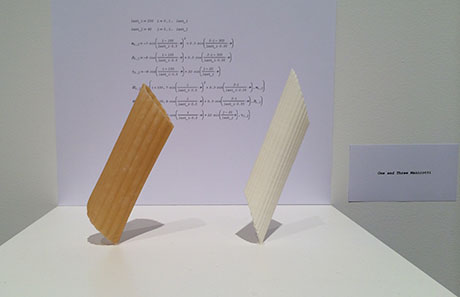
IMAGE: Manicotti, Serkan Özkaya and George L. Legendre, One and Three Pasta, 2012/14. Photograph by Nicola Twilley.
In other cases, the two are identical but for material and colour, the 3D-printed version simply providing a ghostly echo.
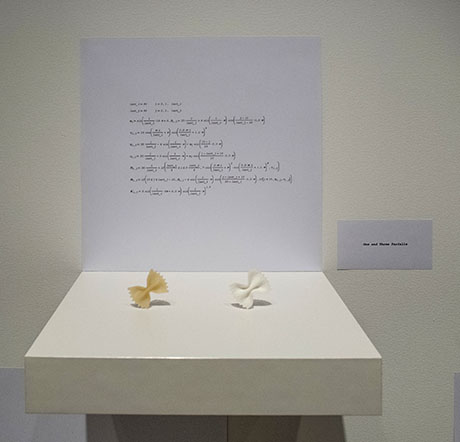
IMAGE: Farfalle, Serkan Özkaya and George L. Legendre, One and Three Pasta, 2012/14. Photograph courtesy of Postmasters Gallery, New York.
And, in still others, the plastic, ur-forms are the more exuberant of the two, uncoiling with an additional flourish despite the off-putting rigour of their origins.
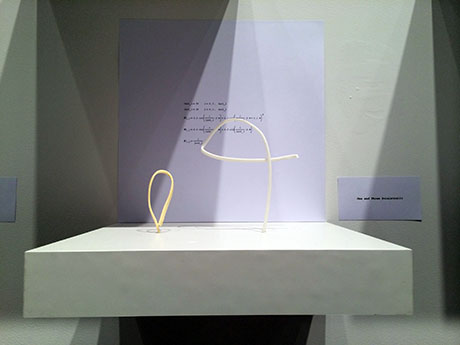
IMAGE: Scialatielli, Serkan Özkaya and George L. Legendre, One and Three Pasta, 2012/14. Photograph by Nicola Twilley.
The exhibition is on display at Postmasters until April 19, and is well worth a look if you’re in New York City.
Thanks to Katie Holten for the tip.

